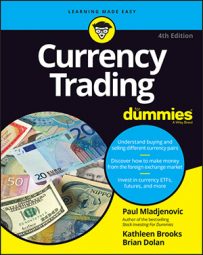Recollections of individual trades can be hazy sometimes. Some traders may tend to favor remembering winning trades, whereas others may remember only the losing trades. The only way to get to the heart of the matter is to look at the numbers — the results of your trades over a specific time period, such as a month.
A trading record doesn’t lie, but you still have to interpret it properly to glean any useful lessons from it. Depending on your trading style, it’s best to approach analyzing your trading record from two different angles, each with a common denominator — average wins and average losses.
Long-term and medium-term traders: Tend to have fewer overall trades because they’re more likely to be looking at the market from a more strategic perspective, picking trade opportunities more selectively. If that’s you, you’ll want to tally your results on a per-trade basis, totaling up separately the number of winning trades and the number of losing trades, along with the total amount of profits and the total amount of losses.
Divide the number of profits by the number of winning trades to find your average winning trade amount. Do the same with your losing trades.
Short-term traders: Tend to have a larger number of trades due to their short-term trading style. If that’s you, you’re going to want to measure your results on a per-day basis. Tally up your daily profit and loss (P/L) and note the number of winning/losing days in a month, along with the average win/loss per day.
Your results can be very helpful in allowing you to further identify your strengths and weaknesses as a trader. The main focus is to evaluate how good you are at spotting trades and how your financial successes compare to your financial losses.
If you have more winning trades or trading days per month than losing ones, you’re on the right track and you’re likely adept at spotting trading opportunities or actively trading in and out in the market. If your losing days or trades outnumber your winners, you probably need to take a good hard look at how you’re identifying your trades or making your short-term decisions.
Next, you want to look at the size of your average win and average loss. Again, if your average win is larger than your average loss, you’re doing something right, and that bodes well. When you’re right, you’re right for a larger amount than when you’re wrong — and that’s just the way you want it to be.
Focus on what you’re doing right, but also figure out what you’re doing wrong. Refine your analysis of your trading results by breaking them down to smaller categories, such as day of the week and currency pair or even trade size. Are your losing days or trades concentrated on certain days of the week, such as Fridays or Mondays?
For example, in our own experience, trading on the last day of a month was a losing proposition. Are your losing trades concentrated in certain currency pairs? Does the position size of each trade have any relationship to wins and losses? Are you winning more on large trades, for example, or are you giving up larger losses on smaller trade sizes?
Look at your results as dispassionately as possible. They’re the real reflection of your currency trading. Learn from them, and use them to do the following:
Keep yourself honest. You may remember only the winning trades and not realize you’re developing bad risk-management habits.
Spot dangerous habits or lapses. Over time, you’ll develop and refine your trading style. If you’re successful, you’ll want to stay that way, and monitoring your trading results on a regular basis is the way to do that.
If you lose more than you normally do on a losing trade, you may want to consider scaling back. If you’re winning on more days or trades than normal, you’ll also want to do a reality check and make sure you aren’t overextending it.
Be your own best teacher. Identify your strengths and weaknesses, as well as trading styles and market conditions that fit your temperament and discipline best. Focus on those where you experience the greatest success, and avoid those with bad results.
Identify market sessions and currency pairs that suit you best. Interpret your trading results to help pinpoint currency pairs where you’ve had the most success and avoid those where you don’t. You may need to adapt your trading schedule and concentrate on only a portion of a particular trading session.
Currency trading is all about getting out of it what you put into it. Evaluating your trading results on a regular basis is an essential step in improving your trading skills, refining your trading styles, maximizing your trading strengths, and minimizing your trading weaknesses.

